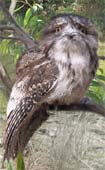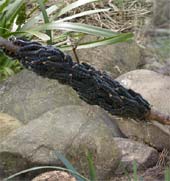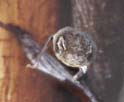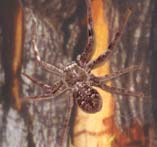Panel 9: Links and Further Information

There is far more information available on all the issues and animals touched on in this exhibition. For further information email the Living Museum on lmwbriak@livingmuseum.org.au or simply put any of the words in the text (eg macroinvertebrates) into google or any other search engine on the internet.
For more information on issues to do with water look up EPA Victoria (www.epa.vic.gov.au), Waterwatch (www.vic.waterwatch.org.au) Melbourne Water (www.melbournewater.com.au), the Federal Department of Environment and Heritage (www.deh.gov.au), Museum of Victoria (www.mov.vic.gov.au/) or The Australia Museum (www.nma.gov.au)
Animals

TAWNY FROGMOUTH – djinith djinith (W)
The Tawny Frogmouth mainly eats nocturnal insects, worms, slugs and snails but will also pounce on small mammals, reptiles, frogs and birds.

SPITFIRES
Spitfires, which don’t really spit but rather dribble, are the larvae of the sawfly and are related to wasps. During the day they group together to discourage predators but separate to feed at night and can cause considerable damage to young eucalypts.

WHITE-STRIPED FREETAIL BAT
This small White-Striped Freetail Bat hunts above the tree canopy for insects using echo-location; emitting high-pitched, metallic-sounding calls from its mouth. It catches and eats insects as it flies.
(bat) buliyong (W) nganin-nganitj (B)

GOULDS WATTLED BAT
Gould’s Wattled Bat is very small usually growing no bigger than 20 grams. It has good eyesight but usually uses echo-location to navigate and detect insects, making an audible, high-pitched sound in flight.
(bat) buliyong (W) nganin-nganitj (B)

HUNTSMAN SPIDER
This huntsman is the one most commonly found in houses, where it hunts at night on walls and ceilings for insects. In the bush it can be found sheltering during the day beneath the loose bark of Eucalypts.
(spider) Barna-karrik or marna-karrick (B)
Images of each of the animals in this exhibition are available to purchase in a high-resolution format. All enquiries should be directed to admin@livingmuseum.org.au or by telephone on +613 9318 3544.
